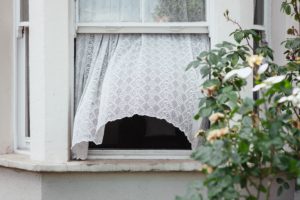Ventilation and Covid-19
Colin Timmins, director of Building Technologies at BEAMA, the UK trade association for manufacturers and providers of energy infrastructure technologies and systems explains why effective ventilation is so important to stop the spread of Covid-19.
There is a growing view that Covid-19 is now something we will have to live with, even after vaccinations, and ongoing measures are now being discussed as an issue of personal responsibility
One of the key areas identified within this developing landscape, and yet one the public is poorly equipped to deal with, is how well our buildings are ventilated.
In April 2021, The Lancet published an article exploring the airborne transmission of Covid-19, concluding that there is consistent and strong evidence that airborne transmission of the virus is the dominant cause of Covid-19 spreading.
This followed a public statement from 241 scientists declaring that the risk of transmission can be substantially reduced by indoor ventilation, but expressing concern that such measures are not being sufficiently recognised and supported by those seeking to control the pandemic.
Following this, the UK Government added ‘fresh air’ to their ‘hands face space’ messaging – a definitive sign that they accepted these stances.
Despite this, there is little evidence of the Government implementing practical measures to improve ventilation in buildings.
Standards of ventilation have long been sub-standard in many of the buildings we use and while it is encouraging to see that the role of ventilation in reducing the risk of airborne transmission was recognised in the recent Building Regulation consultation, the higher standards proposed will only apply to new buildings, or where refurbishment is already taking place.
Various factors have compounded the issue of ineffective ventilation too. A recent article from the British Medical Journal (BMJ) highlighted that there is no value in telling people to open windows (which Government guidance has done) if the windows do not open, as is common in many public and private buildings.

Why the Government must do more on ventilation
The Government has issued guidance to improve ventilation in various buildings and scenarios to mitigate Covid-19, however, this has focussed on limited steps to utilise the ventilation systems already in place, but nothing on how to assess what ventilation is necessary or how to get a suitable system installed.
During the first lockdown in July 2020, BEAMA advocated to Government that they should consider grants for ventilation installations, particularly in hospitality venues, as part of a retrofit strategy.
This would help stimulate economic activity while also make venues safer for customers, and potentially able to open their doors sooner.
While the Government entertained the idea, the evidence on ventilation was likely not high enough on the agenda for this to be prioritised.
Since then, the evidence-base and conversation and around ventilation and Covid-19 has become widespread, amongst both the public and in Parliament.
In an exchange between the Shadow Health Secretary, Jonathan Ashworth, and the former Health Secretary, Matt Hancock, on 17 May, the Shadow Secretary stated: ‘We know about airborne spread of the virus, so why are we not supporting venues more with ventilation? What are we doing to help supermarkets, shopping centres and larger venues where air circulates around the building, to put in place covid-secure air filtration systems?’.
The Health Secretary responded: ‘The hon. Gentleman asked about important wider measures. He mentioned ventilation. We have put in place guidance for businesses in terms of strengthening the rules around ventilation, and that, too, is
important.’
This suggests that the Government views guidance as the pinnacle of action on ventilation without backing this up with practical measures.
Baroness Thornton declared in Parliament earlier this month: ‘Why, when we are 15 months into the pandemic, have the Government failed to take meaningful action to help businesses, schools and leisure facilities improve ventilation, when this is an airborne virus? I suggest to the Minister that we need a ventilation strategy.’
Why a ventilation strategy is required
 The answer here is that the Government must provide practical support and implement an effective ventilation strategy. Improved ventilation systems need to be installed, in-use performance needs to be measured and the public needs information on ventilation performance in the buildings they visit.
The answer here is that the Government must provide practical support and implement an effective ventilation strategy. Improved ventilation systems need to be installed, in-use performance needs to be measured and the public needs information on ventilation performance in the buildings they visit.
You cannot achieve steps 2 and 3 if you do not stimulate step 1.
Effective mechanical ventilation can provide a valid and long-term solution for mitigating the impact of Covid-19, but it is concerning that information on its benefits is so limited. A significant step forward would be to establish appropriate standards for retrofitting mechanical ventilation that would allow compliant buildings to open safely and help alleviate fears the public, particularly vulnerable groups, may have.
The challenge often cited when discussing ventilation improvements is cost, particularly for those businesses who have been forced to stay closed and are struggling for cash. This is an area where Government intervention could provide real rewards. Providing grants or loans to incentivise ventilation on the basis that, following the improvements, businesses will be able to open
permanently and safely if higher standards of air quality are met, could deliver the stimulus needed for businesses to bounce back and instil confidence in the public visiting their premises.
While there is no getting past the investment required, we need to ask ourselves whether this is a price worth paying to ensure the health of the British public is protected.
The Parliamentary Under Secretary of State in the Department for Business, Energy and Industrial Strategy (BEIS), Paul Scully, stated: ‘It has been very clear, right from the outset, that ventilation is an important weapon in tackling covid.’
Given this key learning from the pandemic and concerns people might have in the future, there is a real need to make sure that we can feel safe. An effective ventilation strategy could help achieve this.
In related news, Air Quality News reporter, Laura O’Neill, investigates how the Covid-19 crisis has highlighted widespread weakness in the UK’s approach to ventilation in care homes.
Photo by Alistair MacRobert
















